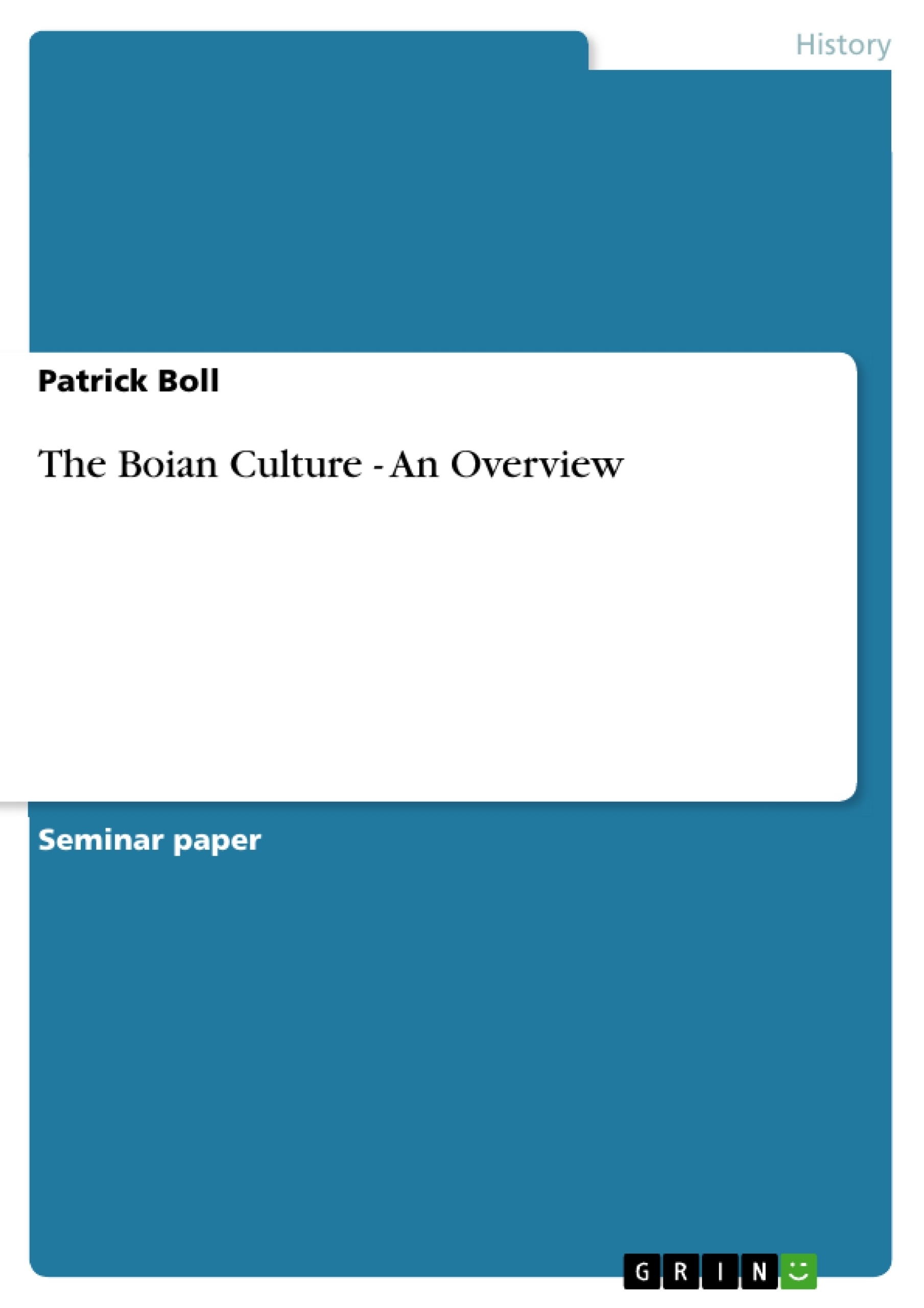The Boian culture is a middle Neolithic culture originated in the south-east territory of today’s
Romania. It is named after the eponym site at Lake Boian in Munteria, Romania. Members of
the Boian culture can be considered as one the earliest farmers on European ground. The term
Boian culture includes rich decorated pottery, an evolved lithic industry, a changing
architecture and a Neolithic subsistence strategy. We´ll face repeated burial rites with grave
goods, early metallurgy, bigger settlements than in the previous times and probably signs of
social- and gender differentiation. Research on the Boian culture and on the Romanian
Neolithic in general comes from many different countries in Europe like Great Britain, France
or Germany and is therefore written and published in different languages and influenced by
different schools. This paper offers a comprehensive overview of the Boian findings, the
history of research and tries to find an answer to the question what the Boian culture stands
for on the wide landscape of European Neolithic cultures.
Inhaltsverzeichnis (Table of Contents)
- Abstract
- Chronology
- Geography
- Archaeological record
- Lithic industry
- Architecture
- Burials
- Ceramics
- Subsistence
- Conclusion
Zielsetzung und Themenschwerpunkte (Objectives and Key Themes)
This paper presents a comprehensive overview of the Boian culture, a middle Neolithic culture that emerged in southeastern Romania. The paper explores the chronological development of the Boian culture, examines its geographical distribution, and delves into the archaeological record, including lithic industry, architecture, burials, ceramics, and subsistence strategies. By analyzing these aspects, the paper aims to understand the significance of the Boian culture within the broader landscape of European Neolithic cultures.
- Chronological development and phases of the Boian culture
- Geographical distribution and spatial characteristics of Boian settlements
- Archaeological evidence for lithic technology, architecture, and burial practices
- Subsistence strategies and economic activities of the Boian people
- Significance of the Boian culture in relation to other European Neolithic cultures
Zusammenfassung der Kapitel (Chapter Summaries)
The paper begins with a brief overview of the Boian culture, outlining its origins and key characteristics, including its distinctive pottery, lithic industry, and subsistence strategies. The following chapter focuses on the chronology of the Boian culture, detailing its four phases, their associated time periods, and the methods used for dating. The third chapter examines the geography of the Boian culture, discussing the location and distribution of Boian settlements, their proximity to water resources, and the potential implications for trade and communication. The fourth chapter provides a detailed analysis of the archaeological record, exploring the evolution of lithic technology, the changes in architecture, and the evidence for burial rites. Finally, the chapter on subsistence strategies explores the evidence for the Boian people's economic activities, including agriculture, hunting, and fishing.
Schlüsselwörter (Keywords)
The Boian culture, Neolithic, Romania, Archaeology, Lithic industry, Architecture, Burials, Ceramics, Subsistence, Chronology, Geography, European Neolithic, Southeastern Europe, Danubian cultures.
- Quote paper
- Patrick Boll (Author), 2011, The Boian Culture - An Overview, Munich, GRIN Verlag, https://www.grin.com/document/202620



